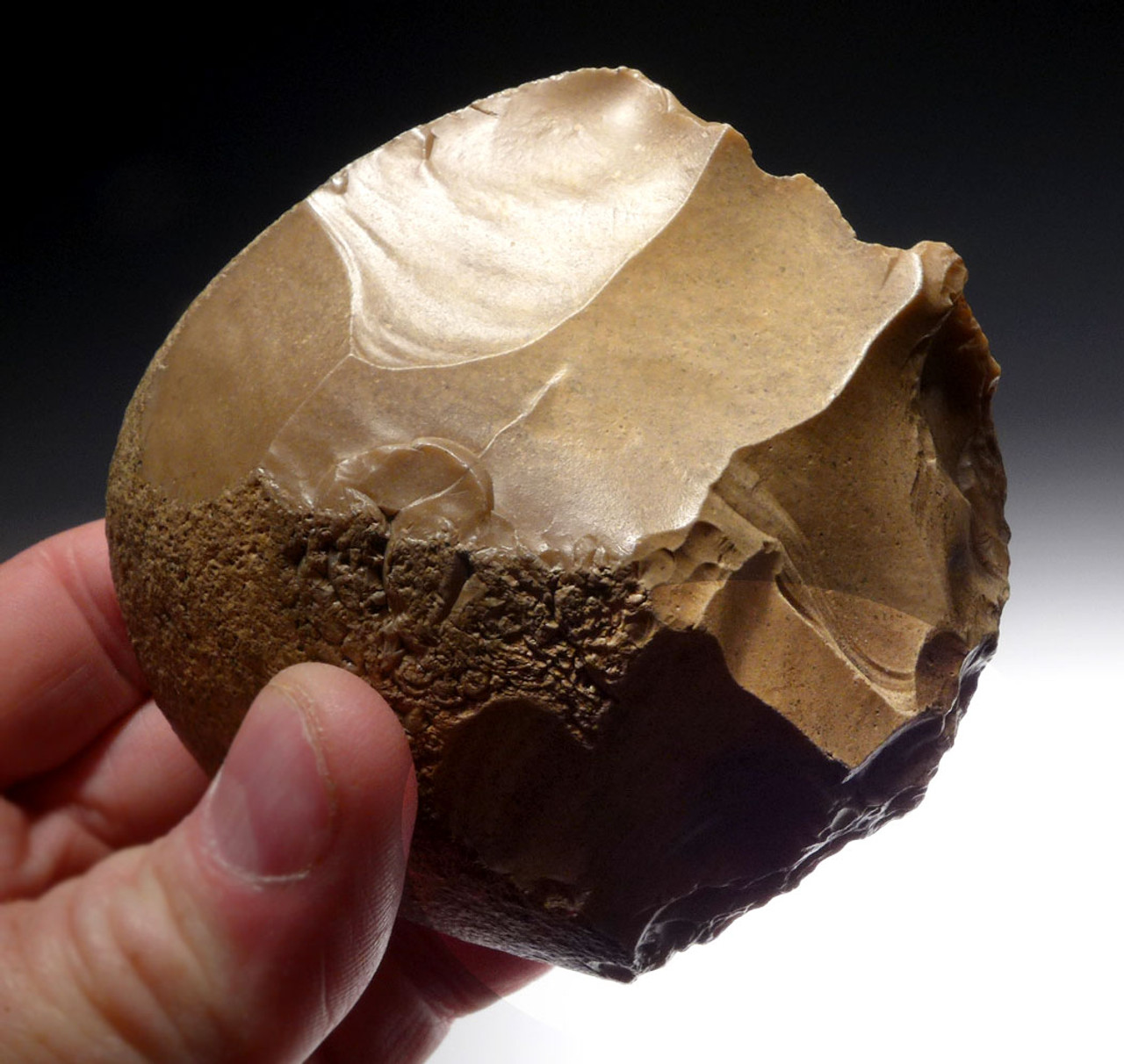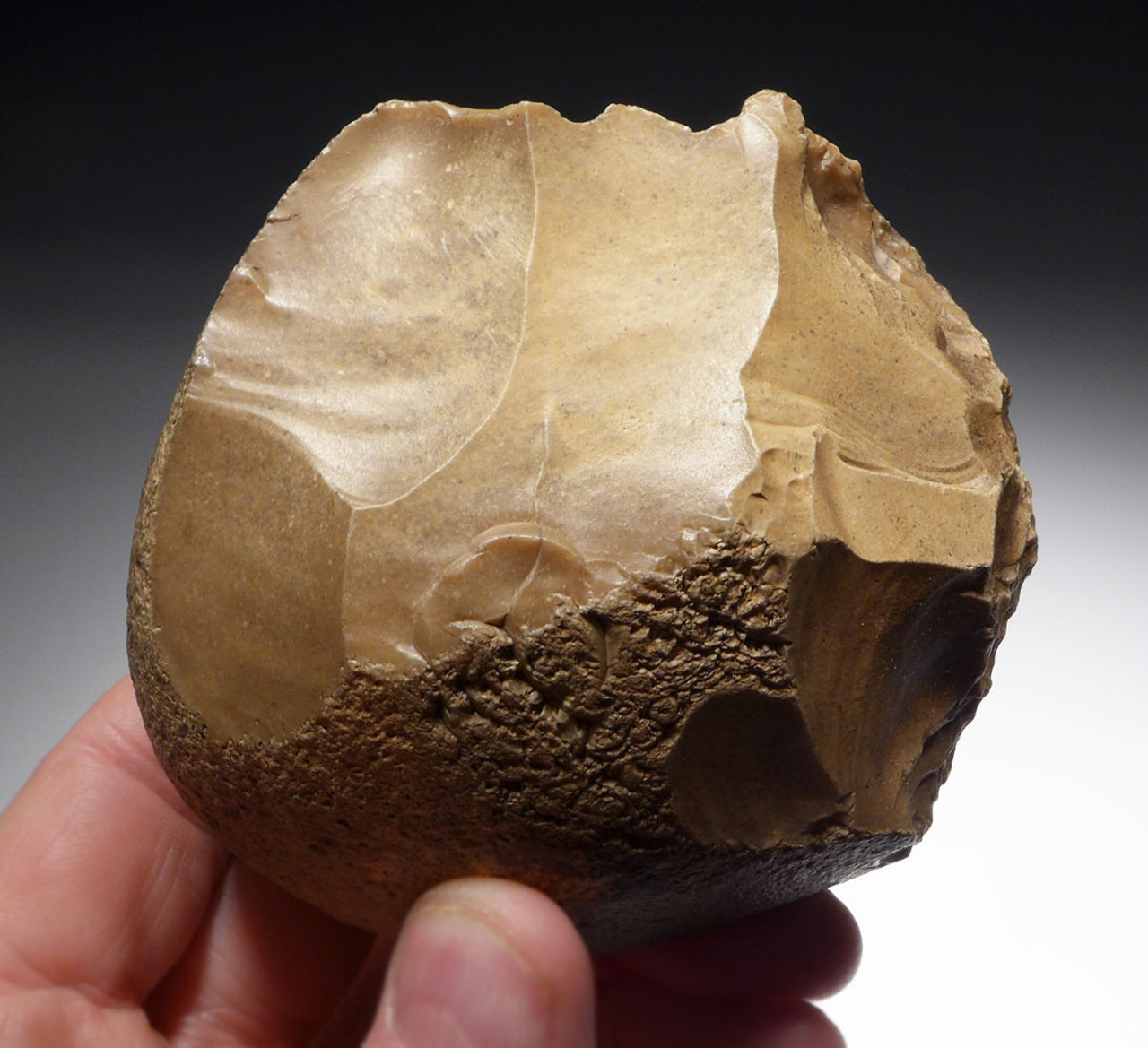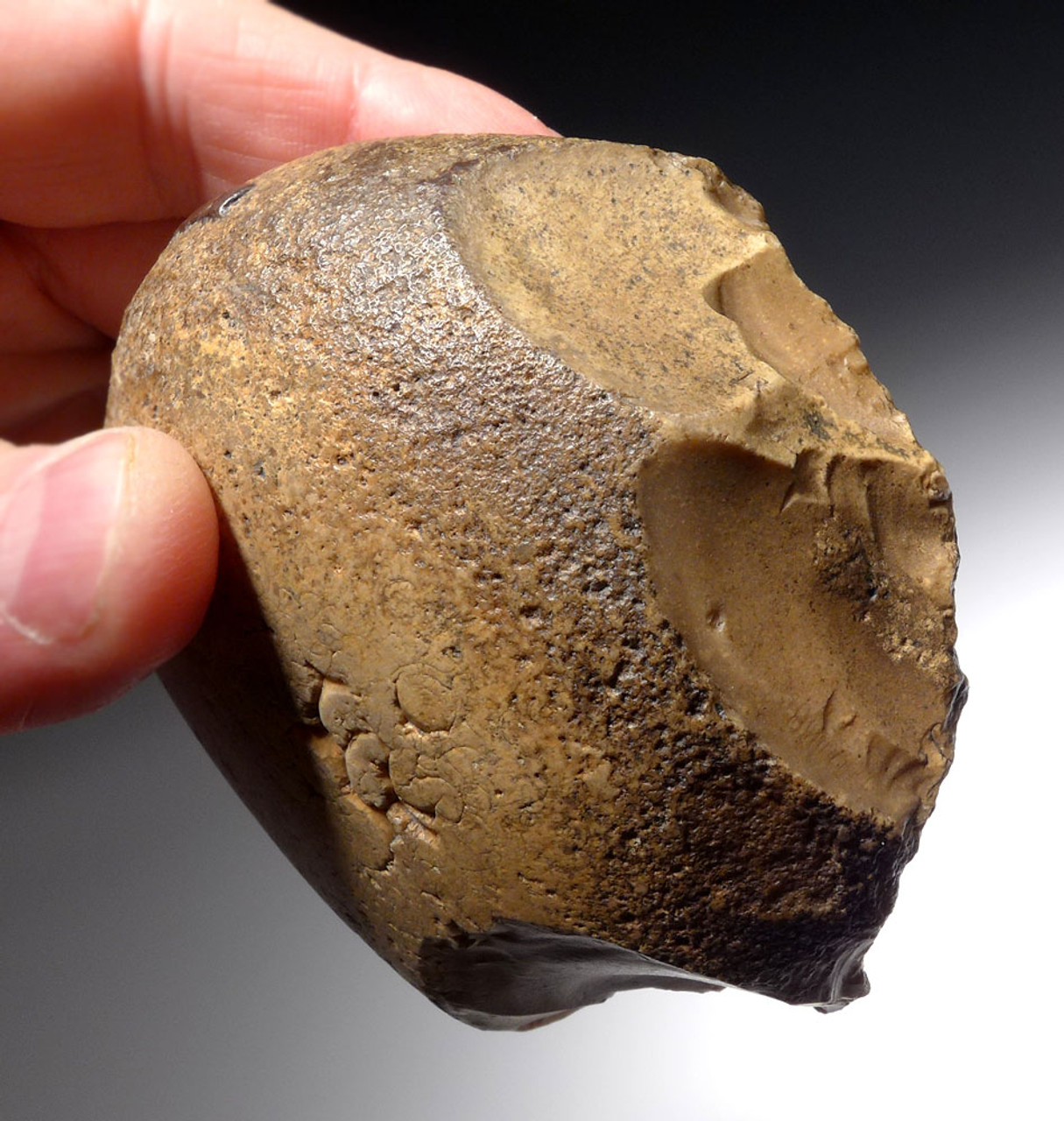Product Description
This is a classic OLDOWAN PEBBLE CHOPPER AXE and is a perfect candidate for demonstrating the earliest primary human stone tool of the Oldowan Tradition of Africa's Lower Paleolithic Period. A true HOLY GRAIL specimen for the most advanced collections, having been found in Libya makes this pebble chopper axe EXTREMELY RARE. This is the FIRST AND ONLY specimen we have to offer from this country despite handling this material for over two decades! It came from a multi-generational private French collection which by these old collections, this is the only way you can acquire such an object as Libya has forbidden removal of all of their artifacts, for many decades, explaining the total absence of prehistoric objects like this. Despite this rare source site, this pebble axe is one of the most beautiful and exquisitely-made specimens we have ever handled. Made on a dark cream-colored flint nodule, intelligent strikes were made to create a chisel-shaped chopping edge. If you were to make a cast of this PREMIUM Lower Paleolithic artifact, it would be the most perfect, reference example to teach with in an academic setting as literally typifies exactly all that make up the Oldowan tool technology in these pebble axes. You could not find a more ideal example as this. There is even a flaked area on the proximal end where held, to improve the comfort of the user when the axe is in hand.
This wonderfully aesthetic specimen is truly a museum-class example. The chopping edge is complete and undamaged as made with no modern handling damage. It shows a chisel end made by several opposing strikes. An ideal hand axe for butchering large hunted game of the time such as prehistoric giraffe, bison or elephants. Supreme and INTELLIGENT workmanship throughout. SCARCE and with our highest recommendation.
HISTORY
Oldowan pebble tools are THE FIRST recognized tools invented by the earliest of primitive humans from Africa. These tools are seldom seen in private collections or public exhibits. Oldowan sites exist in numerous regions of the continent but it takes a very knowledgeable collector to be able to weed out all the naturally-occurring rocks that litter the ground from an actual pebble tool made by Early Man. As the origin of humanity and as the earliest of tool technologies, this African Oldowan specimen poses a very important potential addition to any advanced collection of Paleolithic artifacts. African pebble tools are not common on the market compared to their much later Acheulian relatives. This offering poses a rare opportunity to own an AUTHENTIC example of the first known tool type made by humans - a window into the mind and design thought process of our earliest ancestors.
No one can doubt the importance that pebble tools hold in the history of human development. Their very emergence in Africa over two million years ago allowed the earliest humans to butcher animals for their meat - the needed nourishment that allowed humans to survive and flourish to one day populate and rule the Earth.
WARNING: There are a host of these "tools" for sale on Ebay and many online sellers' websites providing less information and understanding of Lower Paleolithic specimens. Many of these sources offer nothing more than damaged ancient river cobbles caused by environmental action (glacial disturbance, frost damage, etc.) or modern made fakes. Every broken cobblestone found is NOT a human-created Paleolithic tool! The determination of what is man-made and what is an ordinary broken river rock requires a very high level of understanding Paleolithic tool manufacture and technique as well as the experience to be able to differentiate the two and authenticate a genuine stone tool from this culture. Know your source and only deal with well-informed sellers who can help you understand the difference.
 US DOLLAR
US DOLLAR
 EURO
EURO
 AUSTRALIAN DOLLAR
AUSTRALIAN DOLLAR
 CANADIAN DOLLAR
CANADIAN DOLLAR
 POUND STERLING
POUND STERLING






























